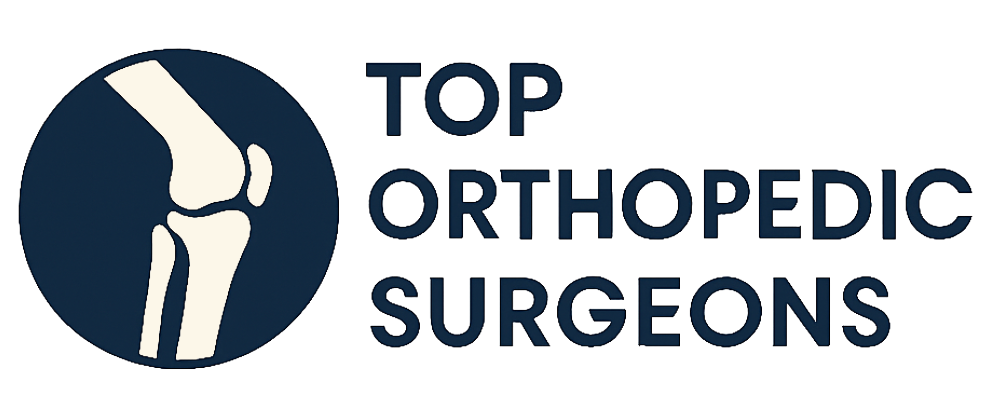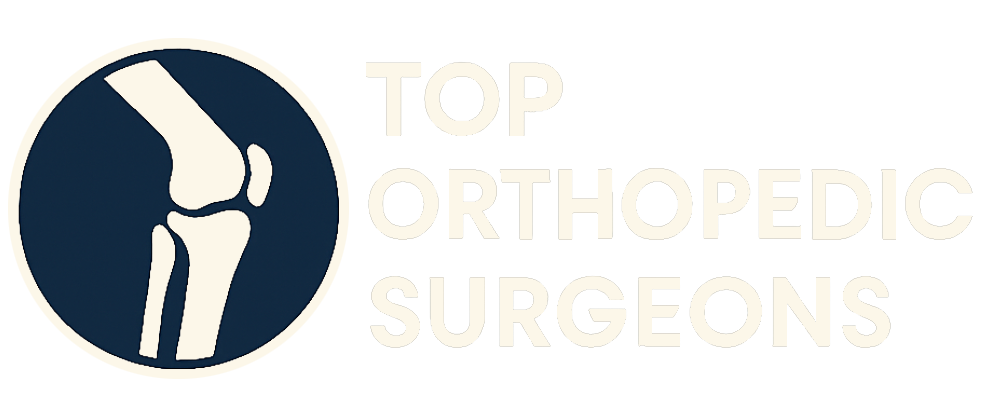
Orthopedic surgery has seen remarkable advancements in recent years, offering patients more effective treatments, quicker recovery times, and improved long-term outcomes. These advanced surgical options range from minimally invasive techniques to robotic-assisted procedures, revolutionizing the way orthopedic conditions are managed. This article aims to provide a comprehensive overview of these innovative approaches, empowering you with the knowledge to make informed decisions about your orthopedic care.
Understanding the Landscape of Advanced Orthopedic Surgery
Advanced orthopedic surgery encompasses a wide array of techniques and technologies designed to address complex musculoskeletal conditions. These advancements often focus on reducing invasiveness, enhancing precision, and accelerating the healing process. By understanding the scope of these options, patients can better engage in discussions with their orthopedic surgeons and explore the most suitable treatment plan for their specific needs.
Minimally Invasive Surgery (MIS)
Minimally Invasive Surgery (MIS) has transformed orthopedic procedures by utilizing smaller incisions, specialized instruments, and advanced imaging techniques. This approach leads to less trauma to the surrounding tissues, resulting in reduced pain, shorter hospital stays, and faster rehabilitation.
Key Benefits of MIS
- Reduced Scarring: Smaller incisions translate to less visible scarring, improving cosmetic outcomes.
- Less Pain: Minimal tissue disruption results in less post-operative pain and discomfort.
- Faster Recovery: Patients typically experience a quicker return to normal activities and work.
- Lower Risk of Infection: Smaller incisions reduce the risk of infection compared to traditional open surgery.
Arthroscopic Surgery
Arthroscopy is a type of MIS that involves inserting a small camera (arthroscope) and surgical instruments through tiny incisions to visualize and treat joint problems. This technique is commonly used to address conditions such as torn ligaments, cartilage damage, and joint impingement in the knee, shoulder, hip, and ankle.
Common Arthroscopic Procedures
- ACL Reconstruction: Repairing a torn anterior cruciate ligament (ACL) in the knee.
- Meniscus Repair: Addressing tears in the meniscus cartilage of the knee.
- Rotator Cuff Repair: Fixing tears in the tendons surrounding the shoulder joint.
- Hip Labral Repair: Repairing tears in the labrum, a ring of cartilage that stabilizes the hip joint.
Robotic-Assisted Surgery
Robotic-assisted surgery combines the skills of an orthopedic surgeon with the precision and control of robotic technology. During these procedures, the surgeon controls robotic arms equipped with surgical instruments, allowing for enhanced accuracy and reduced invasiveness.
Advantages of Robotic-Assisted Surgery
- Enhanced Precision: Robots provide greater accuracy in bone cuts and implant placement, leading to improved outcomes.
- Improved Visualization: Robotic systems offer enhanced 3D visualization of the surgical site, allowing for more precise movements.
- Reduced Tissue Trauma: Robotic assistance enables surgeons to perform complex procedures with minimal damage to surrounding tissues.
- Potential for Faster Recovery: Increased precision and reduced trauma may contribute to quicker recovery times.
Applications of Robotic-Assisted Surgery
- Partial and Total Knee Replacement: Precise implant placement leads to better alignment and stability.
- Total Hip Replacement: Accurate cup placement reduces the risk of dislocation and improves joint function.
- Spinal Surgery: Enhanced precision in screw placement minimizes the risk of nerve damage.
Computer-Assisted Surgery
Computer-assisted surgery utilizes sophisticated software and imaging technology to guide surgeons during orthopedic procedures. This technology provides real-time feedback and guidance, allowing for more accurate implant placement and improved surgical outcomes.
How Computer-Assisted Surgery Works
- Pre-operative Planning: Detailed imaging scans (CT or MRI) are used to create a 3D model of the patient’s anatomy.
- Surgical Navigation: During surgery, computer software tracks the position of instruments and implants in relation to the patient’s anatomy.
- Real-time Guidance: The surgeon receives real-time feedback and guidance on implant placement and alignment, ensuring optimal results.
Joint Replacement Advancements
Joint replacement surgery has made significant strides in recent years, with advancements in implant design, materials, and surgical techniques. These improvements have led to longer-lasting implants, reduced complications, and improved patient satisfaction.
New Materials and Designs
- Highly Cross-Linked Polyethylene: This material is more resistant to wear and tear, extending the lifespan of hip and knee implants.
- Ceramic-on-Ceramic Implants: These implants offer excellent wear characteristics and reduced risk of particle-induced inflammation.
- Custom Implants: Patient-specific implants designed to match individual anatomy, providing a more natural fit and improved function.
Direct Anterior Approach for Hip Replacement
The Direct Anterior Approach (DAA) is a minimally invasive technique for hip replacement that involves accessing the hip joint from the front of the body. This approach avoids cutting major muscles, resulting in less pain, faster recovery, and a lower risk of dislocation.
Spinal Surgery Innovations
Spinal surgery has also benefited from advanced techniques and technologies, offering patients with back pain and spinal disorders more effective treatment options. These innovations focus on stabilizing the spine, relieving nerve compression, and restoring spinal alignment.
Minimally Invasive Spinal Fusion
Minimally invasive spinal fusion involves using small incisions and specialized instruments to fuse vertebrae together. This approach reduces muscle damage, blood loss, and post-operative pain, leading to faster recovery times.
Spinal Cord Stimulation
Spinal cord stimulation (SCS) is a technique used to manage chronic pain by delivering mild electrical impulses to the spinal cord. This therapy can help reduce pain signals and improve quality of life for patients with chronic back pain, nerve pain, and other painful conditions.
Vertebral Augmentation
Vertebral augmentation, including procedures like kyphoplasty and vertebroplasty, is used to treat vertebral compression fractures. These procedures involve injecting bone cement into the fractured vertebra to stabilize it and relieve pain.
Biologic Treatments and Regenerative Medicine
Biologic treatments and regenerative medicine are emerging fields in orthopedics that aim to stimulate the body’s natural healing processes. These approaches involve using cells, tissues, and growth factors to repair damaged cartilage, ligaments, and tendons.
Platelet-Rich Plasma (PRP) Therapy
PRP therapy involves injecting a concentrated solution of platelets into the injured area. Platelets contain growth factors that promote tissue repair and reduce inflammation. PRP is commonly used to treat tendonitis, osteoarthritis, and ligament injuries.
Stem Cell Therapy
Stem cell therapy involves using stem cells, which have the ability to differentiate into various types of cells, to repair damaged tissues. Stem cells can be harvested from the patient’s own body (bone marrow or fat) or from donor sources. This therapy holds promise for treating cartilage defects, non-union fractures, and other orthopedic conditions.
Growth Factors
Growth factors are naturally occurring proteins that stimulate cell growth and tissue repair. They can be used in conjunction with surgical procedures to enhance healing and improve outcomes. Bone morphogenetic proteins (BMPs), for example, are used to promote bone growth in spinal fusion surgeries.
Preparing for Advanced Orthopedic Surgery
If you are considering advanced orthopedic surgery, thorough preparation is essential for a successful outcome. This includes consulting with a qualified orthopedic surgeon, undergoing a comprehensive evaluation, and understanding the risks and benefits of the procedure.
Consultation with an Orthopedic Surgeon
The first step is to schedule a consultation with an experienced orthopedic surgeon who specializes in the type of surgery you are considering. During the consultation, the surgeon will review your medical history, perform a physical examination, and order any necessary imaging tests (X-rays, MRI, CT scans).
Comprehensive Evaluation
A comprehensive evaluation is crucial for determining the best course of treatment. This may involve assessing your overall health, evaluating your pain levels, and assessing your functional abilities. The surgeon will also discuss your goals and expectations for surgery.
Understanding Risks and Benefits
It is important to have a clear understanding of the potential risks and benefits of advanced orthopedic surgery. The surgeon will explain the procedure in detail, including the expected recovery time, potential complications, and alternative treatment options. Be sure to ask any questions you have and address any concerns you may have.
Rehabilitation and Recovery
Rehabilitation is a critical component of the recovery process following advanced orthopedic surgery. A well-structured rehabilitation program can help you regain strength, flexibility, and function, allowing you to return to your normal activities as quickly and safely as possible.
Physical Therapy
Physical therapy plays a vital role in rehabilitation. A physical therapist will develop a personalized exercise program tailored to your specific needs and goals. The program may include range-of-motion exercises, strengthening exercises, and functional activities.
Occupational Therapy
Occupational therapy can help you regain the skills needed to perform daily activities, such as dressing, bathing, and cooking. An occupational therapist will teach you adaptive techniques and provide assistive devices to make these tasks easier.
Pain Management
Effective pain management is essential for a successful recovery. Your surgeon may prescribe pain medications to help control post-operative pain. Other pain management techniques, such as ice therapy, heat therapy, and transcutaneous electrical nerve stimulation (TENS), may also be used.
Follow-up Care
Regular follow-up appointments with your surgeon are important for monitoring your progress and addressing any concerns. During these appointments, the surgeon will assess your wound healing, evaluate your range of motion, and make any necessary adjustments to your rehabilitation program.
Advanced orthopedic surgery offers a range of innovative solutions for patients seeking relief from musculoskeletal conditions. By understanding these options and working closely with a qualified orthopedic surgeon, you can make informed decisions that lead to improved outcomes and a better quality of life. Embracing these advancements empowers patients to take control of their orthopedic health and pursue a path toward recovery and well-being. Remember to discuss your individual needs and expectations with your healthcare provider to determine the most suitable course of action.


